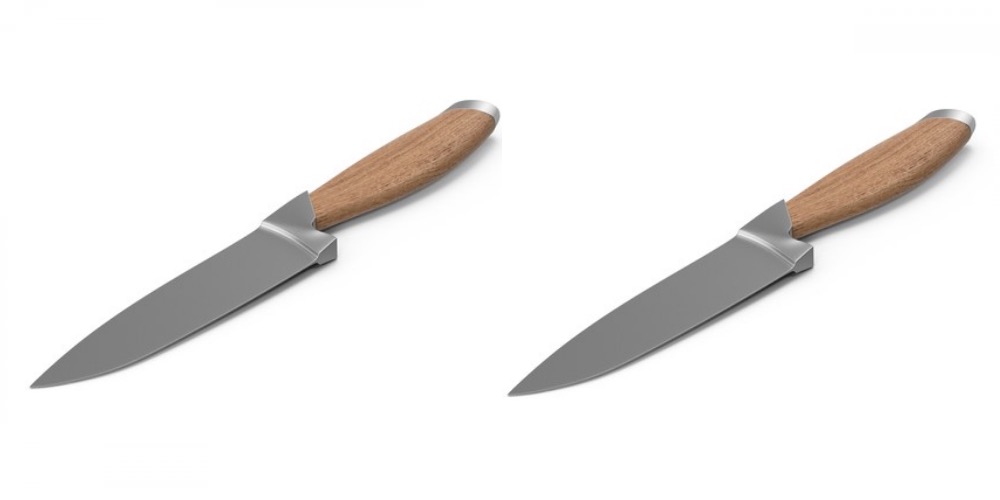A paring knife is smaller than a chef’s knife but has similar applications. It is also referred to as a peeling knife. Its blade size can vary somewhere between 2 ½ inches to 4 inches in length. The iMarku, in this regard, is a highly recommended brand. The company’s paring knives are specially designed for chefs and culinary experts. Read through this whole guide to learn about the many different paring knife types you can buy.
Four Paring Knife Types
The intended function of such a knife is to bring precision and accuracy to kitchen tasks. While the knife can readily cut, trim, and slice, it’s ideally used for peeling fruits and vegetables, deveining prawns and shrimps, and making fancy garnishes. When purchasing, you’ll come across four different paring knife types.
Spear Point Paring Knife
This is considered the standard paring knife. The blade’s tip curves to a point, resembling a chef’s knife. It does the job well with its fine tip while allowing the users to apply less pressure. They also come with a serrated blade.
Although this type of paring knife is used for multiple purposes, its spear point is most helpful in cutting, slicing, peeling, and coring vegetables and fruits.
Sheep’s Foot Paring Knife
This type of paring knife is less versatile but more durable. It has a perfectly straight and smooth blade and a rounded tip. While using the sheep’s foot paring knife, it becomes easier to touch the cutting board with the blade’s tip, whereas the blade itself has minimal contact. This ensures the longevity of this essential kitchen utensil. It is best used for chopping with accuracy and cutting all types of cheese.
Bird’s Beak Paring Knife
As the name suggests, the bird’s beak paring knife has a concave blade in the shape of a bird’s beak. Even though its use in kitchen tasks is very rare, it can be pretty handy for a Tourné cut and for making decorative garnishes. It allows the users to peel fruit and vegetable skin with minimal waste. The downside of purchasing this type is it is extremely difficult to sharpen using an electric knife sharpener.
Western-Style Japanese Paring Knife
Since many traditional Japanese knives are made for intricate cutting, detailing, and carving, these knives are made using high-grade steel. The western-style Japanese paring knife looks just like a spear point paring knife, but its blade is much straighter. A plus point of using this knife is that it gives you more control to do the job without any difficulty. However, you’ll need to be extra cautious since the blade is exceptionally sharp.
How to Use a Paring Knife
To correctly use any of the paring knife types, you need to have a firm grip for complete control. Therefore, the iMarku paring knife is a safe option since they have an ergonomic design. You can either use a paring knife in mid-air or on a cutting board.
Out of the four, the sheep’s foot and western-style Japanese paring knife must never be used off the board due to the shape of blades. On the other hand, it is safe to use the spear point and bird’s beak without a chopping board.


